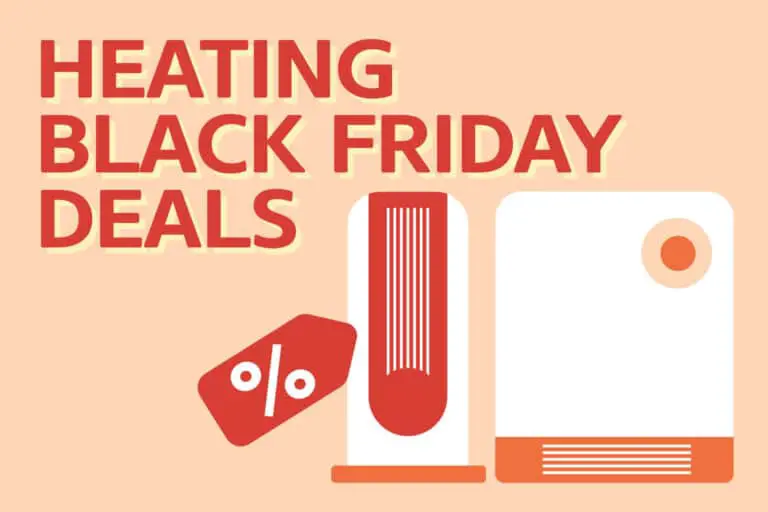Torpedo heaters are a great option when you’re looking to heat larger areas such as workshops or garages.
You must know that all torpedo heaters aren’t made the same.
There are different types of torpedo heaters, which I’ll discuss later in the article.
Let’s focus on the best seven torpedo heaters on the market.
7 Best Torpedo Heaters For Garage & Outdoors
1. Best Overall: Mr. Heater MH75KTR
Mr.Heater is one of the most known kerosene torpedo heaters on the market, and it’s not a coincidence.
This heater is very efficient, and you won’t be disappointed with its performance.
The good thing about this heater is that it can operate for about 12 hours on a full tank – almost twice as much as other heaters.
It has 75,000 BTUs, so you won’t have to worry if it will heat the whole area. It can cover around 1,750 sq. ft.
You’ll love its precise thermostat that you can adjust to work up to the desired room’s temperature.
2. Most Durable: Dura Heat DFA135C
DuraHeat made this model to be built like a tank.
It’s the most durable heater I’ve ever owned, and you can use it for more than ten years.
It has a precise thermostat that lets you know about any temperature changes.
This is a multi-fuel torpedo heater, so you can fuel it with kerosene or diesel – it’s up to you.
It has built-in handles and wheels for easy moving from one place to another.
3. Budget Friendly: Mr. Heater MH60QFAV
Another great torpedo heater from a well-known brand.
Although it’s not as powerful as other heaters, it still has 60,000 BTU, which is solid.
What I find interesting about this model is how quiet it is. You’ll barely hear it running, even on the highest settings.
It has a built-in handle and is lightweight – perfect for heating multiple areas simultaneously.
It runs on propane, so it’s recommended to be used outdoors or in garages with lots of ventilation.
4. Small: Remington
This is the smallest propane heater I’ve come across.
Don’t be confused with the size; this heater is still very efficient and can quickly heat up areas up to 1,500 sq. ft.
It has 300 CFM airflow, so it’s not weak.
You’ll find it easy to move around different areas, so it’s a great model in your garage.
What I love the most about this model is that you can adjust the heat angle – this feature is important on the coldest winter days.
5. Powerful: STANLEY ST-80T-KFA
This heater is the most powerful and efficient torpedo heater you’ll find on the market nowadays.
It has an output of 80,000 BTUs and can heat up to 2,000 sq. ft.
Although it’s very durable, I find it interesting how lightweight it is. It even has a built-in handle for easier carrying.
The second most impressive thing is that this model is multi-fuel – you can use kerosene and diesel.
However, I’d highly recommend using kerosene for better performance.
It has an automatic safety shutoff system that prevents it from overheating or causing a fire.
The only downside is that it can heat for only 8 hours on a full tank, but in that time, you can heat almost any area you want.
6. Cordless: DeWALT DXH70CFAV
This is the only cordless torpedo heater I’ve ever seen.
It runs on 20V batteries that you can easily charge during the day.
By being cordless, this heater is 50% quieter than most torpedo heaters on the market.
Still, you’ll have to fill the tank with propane for it to run.
I love its high-temperature switch limit, protecting you from overheating or causing fire.
7. For Large Area: Pro-Temp PT-220T-SDR
This heater has 220,000 BTUs, so it’s recommended only for larger areas.
If you don’t have a large garage, I would avoid buying this torpedo heater as it’s too powerful.
It was built on construction sites, workshops, farms, and other large areas.
Heating coverage is 5,500 square feet, almost four times stronger than average torpedo heaters.
I was amazed that this heater has a thermostat due to its power.
It’s heavier than other heaters but has sturdy wheels for easy mobility.
Types of Torpedo Heaters
Kerosene Torpedo Heaters
This type of torpedo heater is the most popular on the market. I think kerosene torpedo heaters are more efficient and durable than any other type.
Interestingly, you can store a kerosene tank for over two years.
They’re usually a bit more expensive because their fuel consumption is low, so you’re saving money in the long term.
The average runtime for a 30lb tank is around 18-20 hours.
Propane Torpedo Heaters
These are the second most common type of torpedo heaters on the market.
They are also very efficient, but slightly less than kerosene heaters.
The good side of propane heaters is that they are odorless and colorless so you won’t experience a strong smell like a kerosene heater.
Propane is unsafe for inhalation, so it’s not recommended to be used in non-ventilated areas.
Diesel Torpedo Heaters
I only recommend using a diesel torpedo heater for outdoor use or in the garage with lots of ventilation.
They’re not very efficient but affordable, as diesel costs less than kerosene or propane.
A tank of 20lb will run for at least 9 hours.
The only downside of this heater is that you’ll struggle to store your fuel over the spring/summer.
Multi-Fuel Torpedo Heaters
What’s amazing about this type is that it can use kerosene and diesel to run.
Of course, this type of heater costs more than any other type.
They usually have the most precise thermometers.
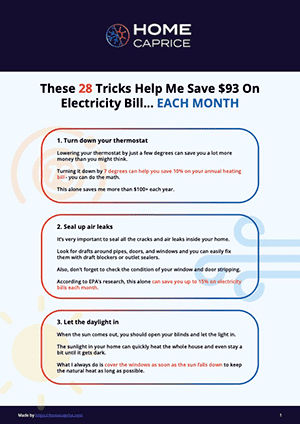
Download this FREE cheat sheet to find 28 tricks that can help you save on your electricity and heating bill each month.
Click here to get a FREE Cheat-SheatBenefits of Torpedo Heaters
- Efficient – Torpedo heaters are very efficient, and they can quickly heat the whole area. This is why they’re perfect for the garage.
- Affordable – Considering the efficiency and maintenance, torpedo heaters are very reasonable. Some types and models might cost a bit more but save you money in the long run.
- Quality – This is one of the most quality types of heaters on the market. Fuels are readily available; you won’t have to break the bank to maintain it.
- Portable – They’re easy to move; some models even have built-in wheels.
- Availability – Many different models are available, and you can choose between 4 different types of torpedo heaters. This guarantees the right choice for everyone’s needs.
Is It Safe To Use A Torpedo Heater Indoors?
My recommendation is not to use torpedo heaters indoors.
However, there are torpedo heaters that were made to be used indoors.
You should always check if the heater is outdoor or indoor rated, or if you don’t know – simply call the manufacturer.
Propane heaters are usually safe in your home, but you should check if you can use propane heaters indoors.
The garage is a great place to put your torpedo heaters; it has a lot of ventilation, and you can always open garage doors to ventilate the area.
Even if you’re using it inside your garage, get a carbon monoxide detector that will alert you if levels of carbon monoxide are rising and could harm you.
Besides propane torpedo heaters, you might be asking if it is safe to use kerosene heaters indoors – the short answer is yes.
If you’re looking for an indoor heater, you should look for space heaters or ceramic or radiant heaters.
How Many BTUs Do I Need To Heat My Garage?
If you have an average two-car garage, you’ll need a heater capable of heating around 7,000+ cubic feet of air.
In other words, you should get a torpedo heater with at least 40,000 BTUs.
A sweet spot is around 40,000 BTU – 90,000 BTU (depending on your garage size).
There are some pretty powerful models on the market, and it doesn’t make sense to buy a very powerful torpedo heater if you have a smaller garage.
If you found this helpful article, read an in-depth article about the best garage heaters.


Download this FREE cheat sheet to find 28 tricks that can help you save on your electricity and heating bill each month.
Click here to get a FREE Cheat-Sheat
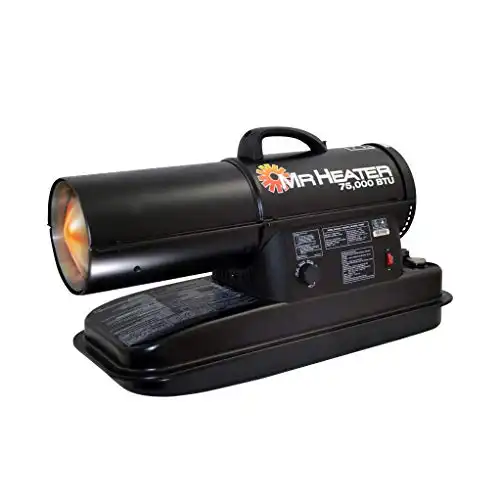
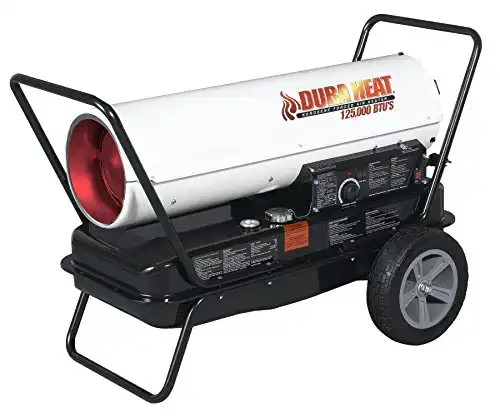
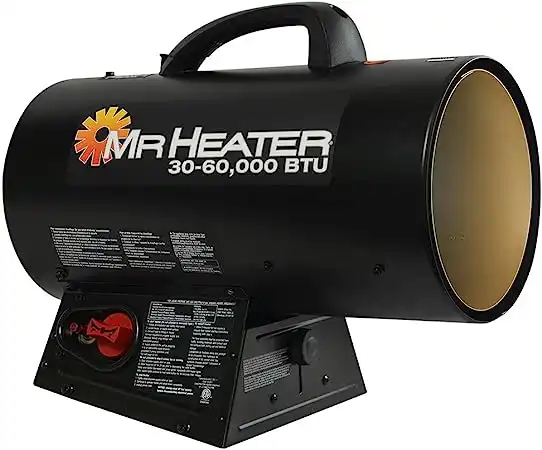
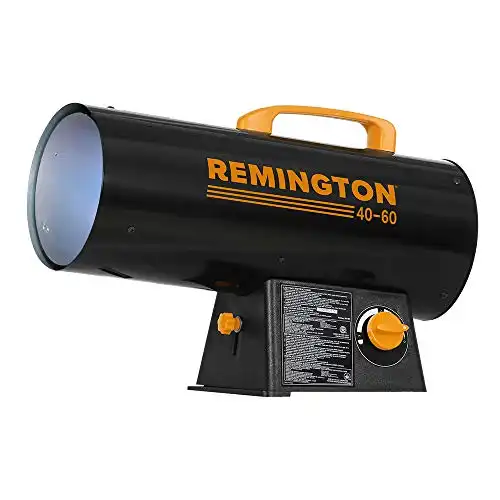
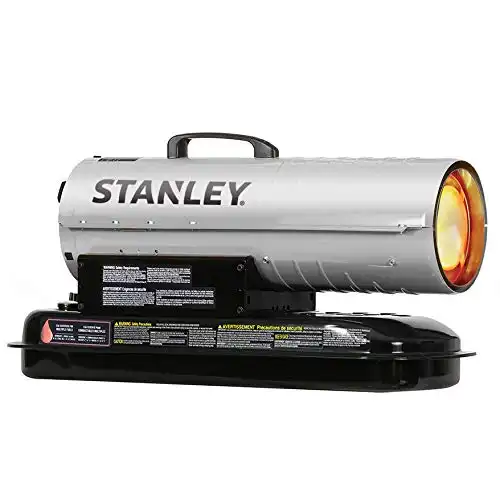
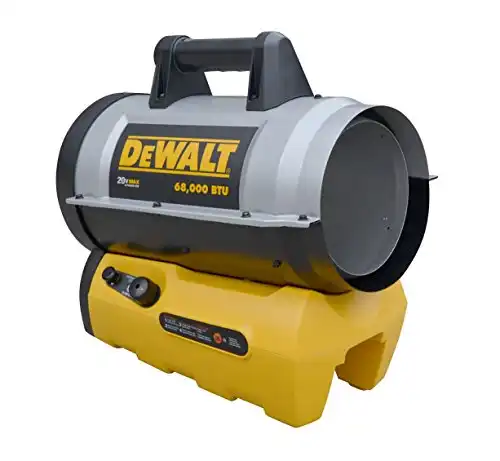
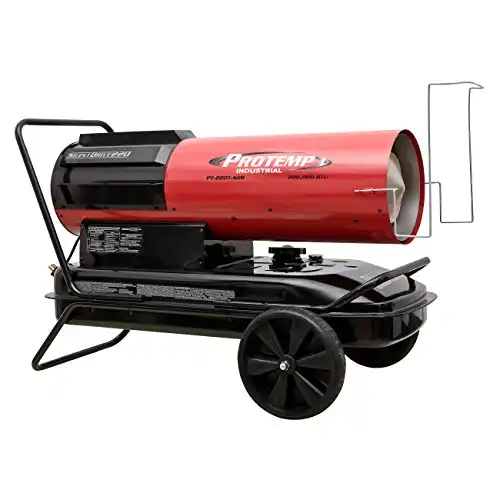
![Ecofan AirDeco II Heater [In-Depth REVIEW]](https://homecaprice.com/wp-content/uploads/2022/08/Ecofan-Airdeco-Review-768x512.jpg)

